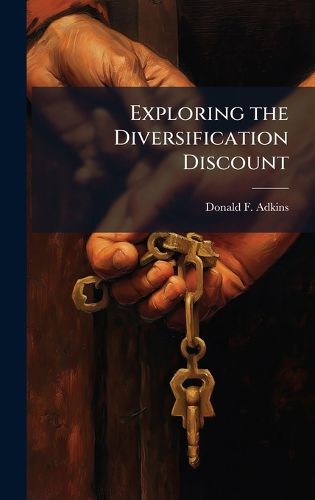Readings Newsletter
Become a Readings Member to make your shopping experience even easier.
Sign in or sign up for free!
You’re not far away from qualifying for FREE standard shipping within Australia
You’ve qualified for FREE standard shipping within Australia
The cart is loading…






This title is printed to order. This book may have been self-published. If so, we cannot guarantee the quality of the content. In the main most books will have gone through the editing process however some may not. We therefore suggest that you be aware of this before ordering this book. If in doubt check either the author or publisher’s details as we are unable to accept any returns unless they are faulty. Please contact us if you have any questions.
When firms choose to acquire others, those acquisitions can either be considered diversifying or non-diversifying. Whether the firm diversifies or not has been shown to affect the post-acquisition performance of that firm. Past merger and acquisition (MA) research has identified a diversification discount when firms diversify through MA activity. However managers continue to diversify, posing the question, Why do firms continue to diversify in the face of research indicating negative post-acquisition performance? The answer may be found in that much of the past research has treated all acquisitions the same by analyzing a wide cross-section of acquisitions from industries of all types. This assumption may be wrong, as not all acquisitions are the same. The present research attempts to build on past research by analyzing only a single segment of MA activity--the high-technology industry between the years 1994 and 1998. In addition, this study differs from past research by analyzing firm post-acquisition performance over a longer three-year period. The present research did achieve significant results that may help eliminate some of the clouds over diversification's true impact on MA activity. A diversification discount was identified by the present research, confirming the findings of much of the past MA literature.
This work has been selected by scholars as being culturally important, and is part of the knowledge base of civilization as we know it. This work was reproduced from the original artifact, and remains as true to the original work as possible. Therefore, you will see the original copyright references, library stamps (as most of these works have been housed in our most important libraries around the world), and other notations in the work.
This work is in the public domain in the United States of America, and possibly other nations. Within the United States, you may freely copy and distribute this work, as no entity (individual or corporate) has a copyright on the body of the work.
As a reproduction of a historical artifact, this work may contain missing or blurred pages, poor pictures, errant marks, etc. Scholars believe, and we concur, that this work is important enough to be preserved, reproduced, and made generally available to the public. We appreciate your support of the preservation process, and thank you for being an important part of keeping this knowledge alive and relevant.
$9.00 standard shipping within Australia
FREE standard shipping within Australia for orders over $100.00
Express & International shipping calculated at checkout
This title is printed to order. This book may have been self-published. If so, we cannot guarantee the quality of the content. In the main most books will have gone through the editing process however some may not. We therefore suggest that you be aware of this before ordering this book. If in doubt check either the author or publisher’s details as we are unable to accept any returns unless they are faulty. Please contact us if you have any questions.
When firms choose to acquire others, those acquisitions can either be considered diversifying or non-diversifying. Whether the firm diversifies or not has been shown to affect the post-acquisition performance of that firm. Past merger and acquisition (MA) research has identified a diversification discount when firms diversify through MA activity. However managers continue to diversify, posing the question, Why do firms continue to diversify in the face of research indicating negative post-acquisition performance? The answer may be found in that much of the past research has treated all acquisitions the same by analyzing a wide cross-section of acquisitions from industries of all types. This assumption may be wrong, as not all acquisitions are the same. The present research attempts to build on past research by analyzing only a single segment of MA activity--the high-technology industry between the years 1994 and 1998. In addition, this study differs from past research by analyzing firm post-acquisition performance over a longer three-year period. The present research did achieve significant results that may help eliminate some of the clouds over diversification's true impact on MA activity. A diversification discount was identified by the present research, confirming the findings of much of the past MA literature.
This work has been selected by scholars as being culturally important, and is part of the knowledge base of civilization as we know it. This work was reproduced from the original artifact, and remains as true to the original work as possible. Therefore, you will see the original copyright references, library stamps (as most of these works have been housed in our most important libraries around the world), and other notations in the work.
This work is in the public domain in the United States of America, and possibly other nations. Within the United States, you may freely copy and distribute this work, as no entity (individual or corporate) has a copyright on the body of the work.
As a reproduction of a historical artifact, this work may contain missing or blurred pages, poor pictures, errant marks, etc. Scholars believe, and we concur, that this work is important enough to be preserved, reproduced, and made generally available to the public. We appreciate your support of the preservation process, and thank you for being an important part of keeping this knowledge alive and relevant.